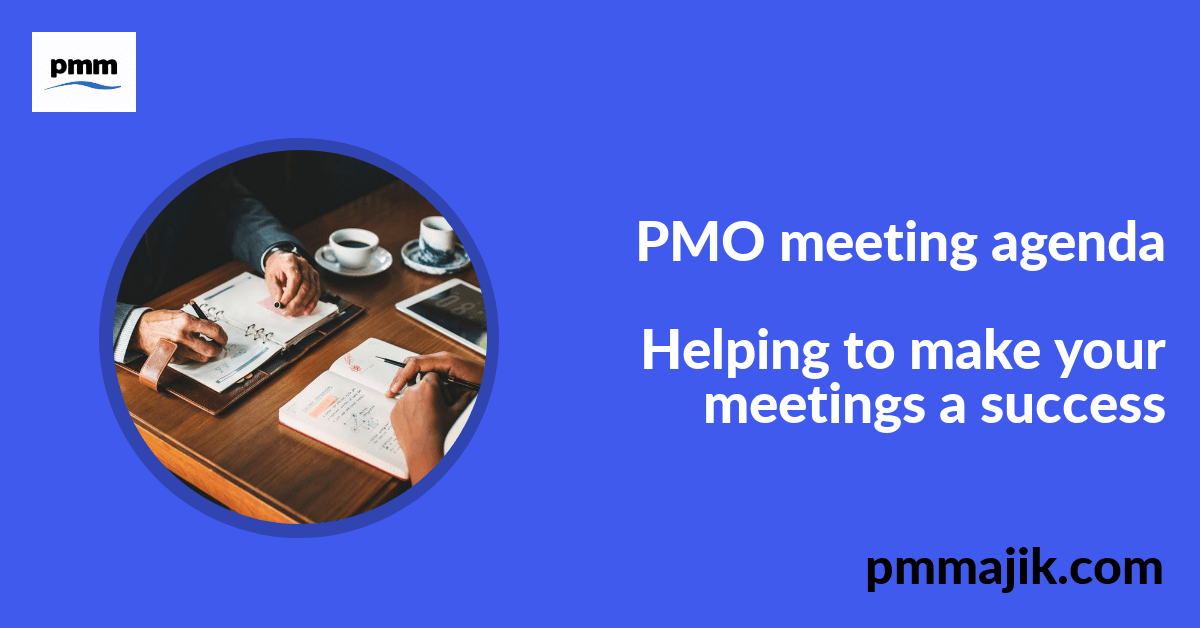A good PMO meeting agenda will help fill the empty seat at the regular PMO meeting!
 If you are managing a PMO with a number of work streams, it is highly likely that you will be holding a regular meeting with the project managers and members of the PMO (tip: if you are not, you probably should be)!
If you are managing a PMO with a number of work streams, it is highly likely that you will be holding a regular meeting with the project managers and members of the PMO (tip: if you are not, you probably should be)!
The reason for these type of meetings is usually based on a desire to be able to share information and address challenges behind ‘closed doors’ before they become visible to the sponsor or people outside of the project or PMO. Unfortunately, in many cases the meeting fails to meet these goal and can end up providing relatively little value or, even worse, the project managers thinking it is a waste of their valuable time.
It is worth taking a moment why this can happen. Usually the PMO sees the meeting as a platform to let the project managers know what they require of them and the status of projects. What this means is that the PMO will talk AT the project managers for 20 minutes and then spend the next 20 – 30 minutes getting each project manager to provide a status update. Then there is a rush to cover risks and issues before any other business (AOB).
Take a moment to think how this feels to the project manager. 20 minutes being told what they need to do by the PMO, 20 minutes playing with the Blackberry waiting to give their status update (reality most project managers don’t care about the other updates), 5 minutes providing an update and then hoping the next 15 minutes goes quickly so that they can get back to work.
You will probably agree, not much fun (or value) to the project manager. This may then result in the project managers starting to dial into the meeting or not attending.
PMO Meeting Agenda
The key to ensuring engagement and providing value is to have a good structure to the meeting. Like with any meeting this is achieved through a meeting agenda.
The meeting agenda will need to cover a number of the hygiene factors for the meeting such as:
- Actions (and minutes if appropriate)
- Issues / risks
- Status update
- General update
However, it is important that the meeting acts as a key communication for the project managers and PMO to raise and discus points that need to be shared, resolved across the group. A very good way to achieve this is as you prepare the agenda is to ask the project managers what items they would like covered on the agenda. Give them 24 – 48 hours to respond then consolidate the responses into themes and publish the agenda.
Example Agenda
- Actions
- Important communications
- <topic 1>
- <topic 2>
- <topic 3>
- <etc>
- Status updates (exceptions)
- Risks / issues
- AOB
This approach will result in better engagement and for challenges to be discussed and solved as a team while still covering the mandatory items. Over time you may find some topics become standing agenda items, this is OK. The aim of the meeting is to keep the communication channels open.
Like with most things in the PMO there is no right or wrong answer. Experiment with the agenda to find what works best for you. The framework can also be used for project meetings.



